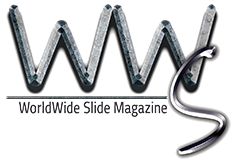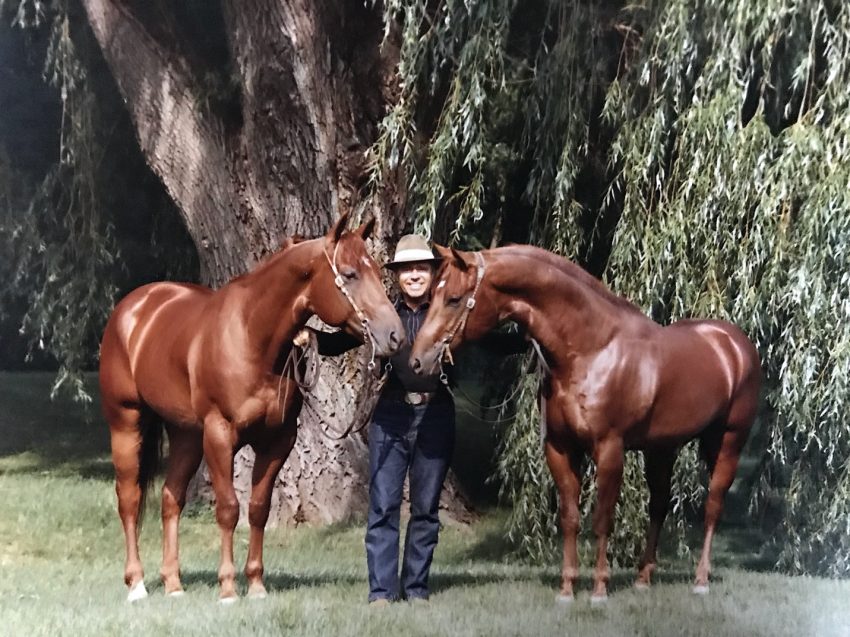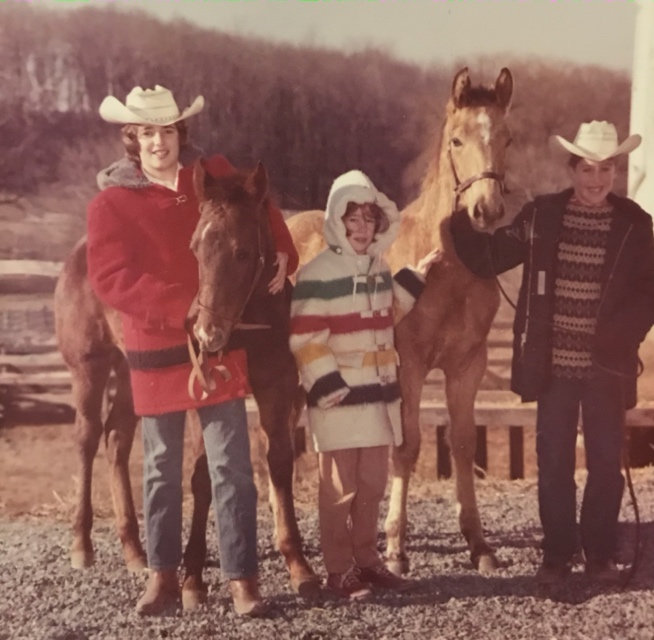
Willow Brook Farms, known today as one of the first breeding farms of reining horses, was owned and operated by the infamous gentleman, C.T. Fuller; but it was the man’s father, Colonel James W. Fuller, who first stitched the farm together. Between 1923 and 1926, Colonel Fuller purchased individual farms in the Catasauqua area, and piece by piece, he accumulated 1,800 acres – a monumental assembly of Pennsylvania acreage where, currently, the average size of a farm is 137 acres.
James Fuller had inherited his father’s Wheel and Axle Company, a railroad axle and wheel manufacturer, and turned it into the Fuller-Lehigh Company in 1926. The new company began to produce conveyor belts used for cement production. He also purchased a concept for a heavy-duty pneumatic screw pump capable of conveying dry, free-flowing or pulverized materials from his partner, Alonzo Kinyon. Fuller-Kinyon pumps are still used today.
The original Willow Brook Farm operated mainly as a dairy that served the Lehigh Valley, and Colonel Fuller used teams of draft horses to farm the land assisted by his children, one of which was Charlton Thomas (C.T.) Fuller.
In 1928 – 1929, Colonel Fuller and his wife, Dorothy, traveled to Europe to purchase the largest horse in the world at the time with intent to improve his draft bloodlines; however, Colonel Fuller would never see the big Belgium at Willow Brook Farms. On the ship home, in the spring of 1929, he cut a mosquito bite with a razor and contracted blood poisoning which led to his untimely death on board the ship.
Dorothy Fuller returned to the large farm alone with only her young son, and the onslaught of the Great Depression led her to sell all of the horses and dairy cows, but she kept the land and lived frugally to save it; however, education was important even in those circumstances, and she sent her son, C.T., to “The Choate School” in Wallingford, Conn.
C.T. returned to the farm during summers to work as a clerk at Allentown Cement Company. After graduation, he earned a college education from Washington & Lee University in Lexington, Va., before enlisting in the Navy to join the World War II efforts.
Before his deployment, in 1940, while on a vacation to Sea Island, Ga., with his mother, C.T. met the woman with whom he would share his life: Edyth Alexandra Huston. He and Alexandra wrote letters to each other during his service as an Anti-Submarine Warfare officer aboard a destroyer escort in the Atlantic and then as a High-Speed Transport in the Pacific.
Alexandra also joined the effort by signing up with the St. Simon’s Island Coast Guard Station. She watched for the approach of German submarines to American shores and taught English in a one-room schoolhouse on Sea Island.
After the war, the two married in 1946 and moved into a small home in Catasauqua where C.T. resumed employment at the Allentown Portland Cement Company. The young couple began their family with Holly, then Peter, and Vicki was born last.
Three years after C.T.’s mother, Dorothy, passed away, the young Fuller family had a new house built on the family farm and took up residence there.
Things were looking good for the Fullers. C.T., having moved up in the company to the office of board chairman, had negotiated the sale of Allentown Portland Cement Company to National Gypsum. The cement industry was booming bolstering the Fuller-Lehigh Company to expand its’ marketplace for the Kinyon-Fuller Pump. Technology licensing agreements for Fuller-designed equipment generated royalties from foreign firms. The company had international subsidiaries in Toronto, London, Dusseldorf, Paris, Madrid, Sydney, Johannesburg, Mexico City, India, and Russia. The nearby town of Fullerton, Pennsylvania was filled with the Fuller Company employees who had worked the original plant location.
C.T.’s eldest daughter, Holly Fuller-McLain, is often humbled by this fact. “It always astounds me to realize that a town is named after our family,” she admitted.
C.T. and his stepbrother, Jim, sold the Fuller Company in 1986.
Meanwhile, Willow Brook Farms operated as a first-class commercial agricultural operation. Cattle, turkeys and various crops were raised on the 1,800-acre farm. The crops included, wheat, alfalfa, potatoes, soybeans, and corn, but there were no equines on its lush fields.
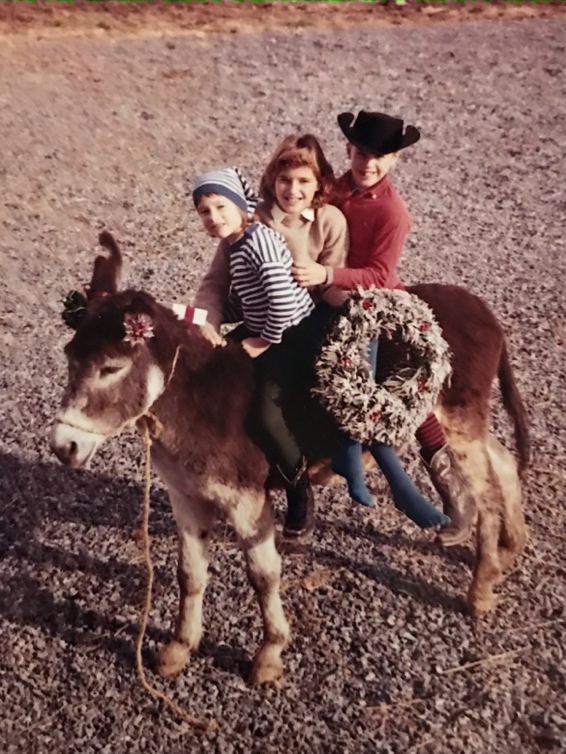
It was Holly’s love of horses that brought them back to its green pastures. “I begged for a horse when I was eight years old. My dad bought one horse, and that was the beginning of the whole thing,” Holly shared. “His name was Breezy, and he was just a grade quarter horse cross of some kind. I had taken lessons at a local equestrian school before I got him, and I showed him in local 4-H stuff.”
Soon, the family purchased another horse, a palomino mare named Woffards Sable and a donkey, Pancho, which the Fuller children would use to pull them around the farm in a cart.
Around this time, Fuller posted an ad in the local newspaper looking for a stableboy to help take care of the horses. Bob Anthony, now in the NRHA Hall of Fame, responded to that ad and was hired.
“Bob took care of the horses and cleaned stalls and took us to school. He was just doing general work for the family,” Holly shared. “He was really, talented, and he trained Breezy to do stock horse shows, which were the beginnings of reining. He took him to the Pennsylvania National Horse Show and entered in the open stock horse class, because Breezy didn’t have to be registered. He won, and that was the start of Willow Brook Farm.”
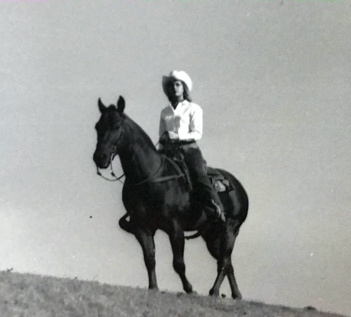
Mr. Fuller, excited by the success of his first horse and talented trainer, purchased a quartet of horses from Virginia Harper of Montauk Point, Long Island, whom he had heard was getting out of the quarter horse breeding business. Hapgoods Sal (Sapphos Bertie x Hapgood Mare) was sold with her two daughters: Sapho Cody and Easter Cody, and their sire, a son of Bill Cody out of Taboo by King P-234.
“After they purchased Joe Cody in 1964, I came on to the scene as a stallion manager at first, then as a breeding manager. During the off seasons, I broke the 2-year-olds,” Dick Herr, who would ultimately serve the Farm for 28 years, explained.
“It was a very unique place. There were Bethlehem, Allentown, Catasauqua, and North Hampton: we were surrounded by towns. Here we were sitting right in the middle of that with this big farm,” Herr shared. “The heart of it was the farming operation. There was only, maybe 200 acres of horse and cattle pastures.”
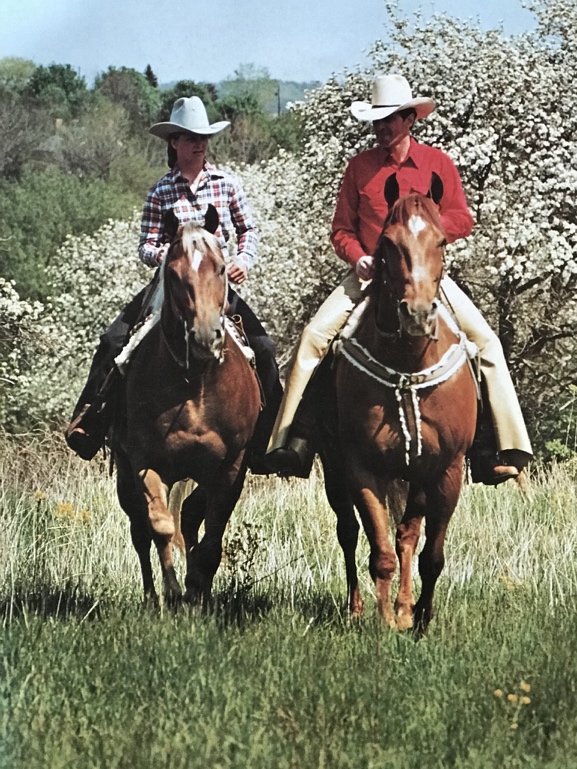
Herr had graduated from the University of Wyoming but chose to earn his living traveling to rodeos as a bull rider. While at a rodeo in Harrisburg, Pa., he met Willow Brook employee Dan Trien and was taken to the farm to see it. “I met Bob Anthony, and he introduced me to Mr. Fuller. Bob wanted to be a trainer. He didn’t want to be messing around with breeding and raising young horses, so he asked me if I would be interested, and I said that I would consider it. After a meeting with Bob and Mr. Fuller, they hired me, but I had to go back to Wyoming to get everything lined out, get a trailer, and get everything hauled back to Willow Brook. It took me a good two or three weeks.
“I loved Wyoming, and I hated to leave there, but my original plan was to only stay at Willow Brook for maybe five or 10 years, then go back. But I got along so well with Mr. Fuller, that it just kind of progressed on and on, until I just didn’t want to leave anymore.”
Mr. Fuller wasn’t the only one who Herr got on well with. Fuller’s new stallion proved to be just as kind. “Joe Cody was always really gentle with me. I could do anything with him, and he was very easy to breed. We had to keep him away from other studs for sure, but with people, he was a sweetheart,” Herr stated. “After we started using A.I. techniques, we could leave him standing in the breeding room with his lead rope on the ground while we got the tease mare ready. I would pick up his lead rope and bring him to the mare, and he was a real gentleman about all of it.”
Anthony and the offspring of Joe Cody and others would go on to accomplish great things in reining competition.
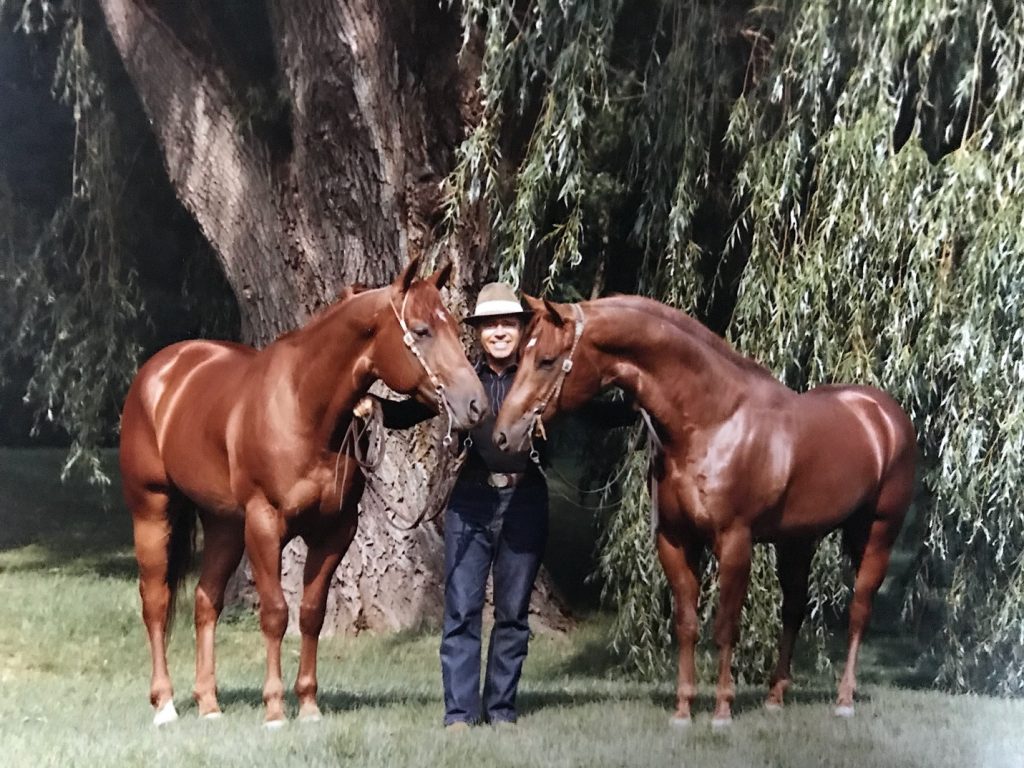
Herr shared, “There were several bloodlines that were great crosses. Joe Cody crossed very well with Blondys Dude mares, and we bought Sappho Cody and Easter Cody’s mother too, Hapgoods Sal. She produced three or four full sisters and brothers. They were all nice horses.”
Mario Boisjoli, a trainer who would come on the scene later, loved Joe Cody’s offspring. “They had a lot of heart and a lot of try, and they stayed sound. They lasted a long time,” he said. “I was at a big event in Long Island, and I had an 11-year-old student riding a Joe Cody named Pats Pal. He was thirteen years old. It was her turn to go when I realized that he had lost one of his slide plates. She kind of panicked, but I said, ‘Just go show him.’ This was not the Youth class. They didn’t have a Youth class back then. She would have been in the Rookie, but she won it: an eleven-year-old girl on a thirteen-year-old son of Joe Cody missing a slide plate.”
Boisjoli also told of his own experience with a grandson of Joe Cody: Carma Corona by Corona Cody. “At a show in the outdoor arena at Willow Brook, his bridle broke, and the bit fell out of his mouth in the first maneuver of pattern 8. I finished the pattern with the bit on his chest and scored a 72.5 to win the Novice Horse class. It was the only time that someone won a category 1 event in NRHA history without a bit in the mouth.”
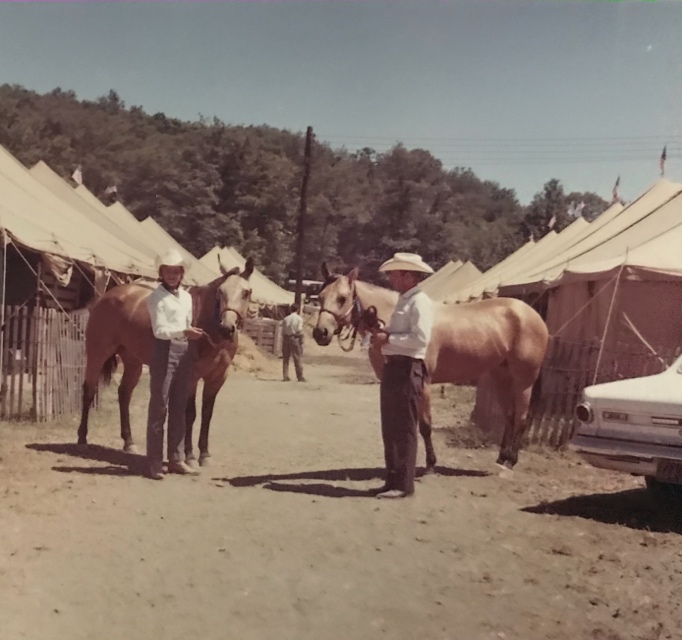
As published in the February 2015 NRHA Reiner:
Bob Anthony Rode Sappho Cody to the 1963 AQHA Honor Roll reining title, and then did it again on Easter Cody, who was the 1965 AQHA Honor Roll Reining Champion as well as the 1966 and 1967 Working Cow Horse Honor Roll Champion. Sal Cody was an AQHA Champion, Golden Sal Cody earned an Arena ROM, and Sapphire Cody was the 1971 AQHA Honor Roll Reining Champion. But it was Easter Cody who held a special place in Bob’s heart. He would tell everyone how gorgeous and talented she was whenever they asked about her. Many people didn’t know that she was also the Grand Champion Halter Mare at Devon one year. Red God, Tawny Cody, Benito Paprika, Paprika Cody, Workman’s Joe, Guitar Mama, Titan Cody, and Corona Cody were also performance superstars with Bob at the reins.
One example of Bob’s dominance in the show pen was at the very first AQHA World Championship Show in 1974. Bob won both the Junior and Senior Reining: Tawny Cody was the Senior Champion and NRHA Hall of Famer High Proof was the Junior Champion. This impressive record stood for 28 years until NRHA Two Million Dollar Rider Duane Latimer won both the Junior and Senior Reining classes at the AQHA World show in 2002. It is most interesting that he won both classes aboard Remin Whiz and This Chex On Top, a son and daughter of Topsail Whiz, who was a grandson of Joe Cody.
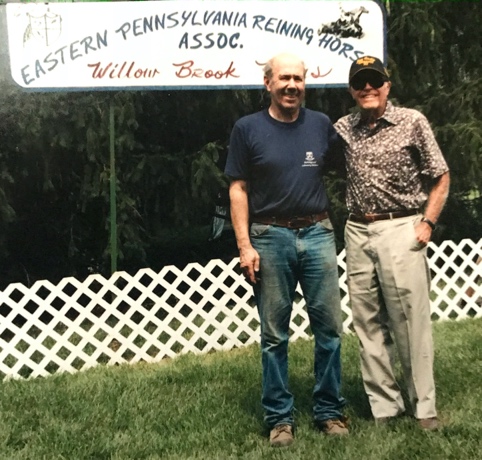
The success of the Willow Brook horses was due in part to their farrier for 40 years, Gene Brandner, who is often credited with inventing the slide plate. “Bob sort of took me under his wing. To make a long story short, I was shoeing just regular horses in the neighborhood there, and he came to me one day and told me he was flying a guy in from Indiana named Roland Bolling. He had a concept about how to make sliding plates. Fortunately, enough, we had our own blacksmith shop there at Willow Brook that I could fool around in at night and play with sliding plates, and that was the whole deal. We would try something and ride the horses to see if it worked or didn’t work. We would talk it over, and if it didn’t work in a couple of days, we could pull the shoe off and try something else,” Gene said.
“Gene will tell you that there was this other guy that was his mentor, which is probably true, but he really studied those slide plates,” Holly agreed.
The outdoor arena at Willow Brook is now known for its good ground, but Herr remembers when it wasn’t so. He said, “We tried all kinds of things. We tried different kinds of oils that we mixed in the ground. We put calcium in the dirt to make it hard. The toughest thing was getting the base right. We would dig it out and pack it with clay, but that never seemed to work. Then we tried stone screenings. One fall, we put stone screenings in and packed it down really well and let it sit all winter to settle, then in the spring, we went back and put sand in on it. That did it. I think it is still one of the best places to show a reining horse in the country. You can show there right after a rain. A lot of people have tried to copy it.”
Herr credited Fuller’s cement business for the quality of limestone screenings they had access to as that area of Pennsylvania was known for its limestone quarries.
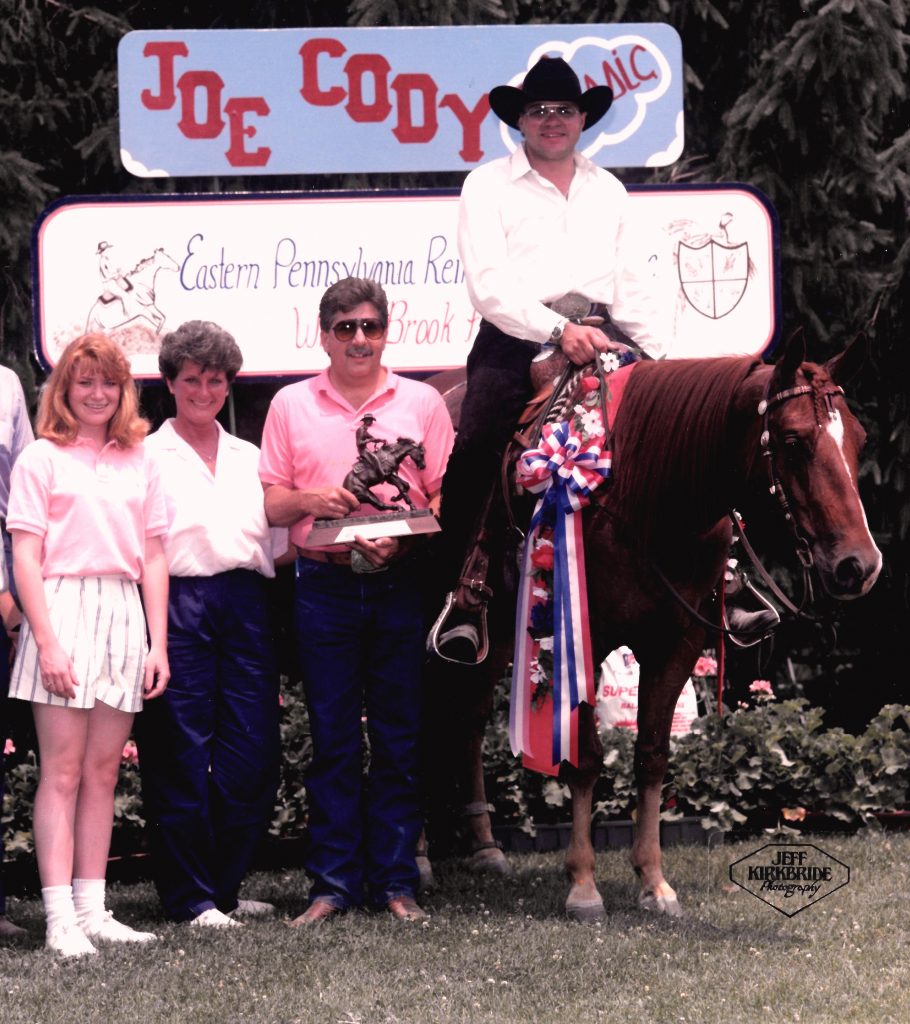
“Before we got that arena right, Bob Anthony would teach his horses to slide in all different places on the farm. There was a gravel road that he rode on, and there was a hill that he slid down,” Herr recalled with a chuckle. “He was one of the guys that really got the sliding stop into what it is today where a horse slides a long way. Before then, on a reining horse, you just kind of jumped it into the ground, but that arena had a lot to do with it.”
Bob Anthony left Willow Brook Farms in 1977 to start his own training business and left a huge void to fill, but several trainers took on the task remotely. Prospects were sent out to men like Bob Loomis, Bob Anthony, Guy Gauthier, and Rocky Dare.
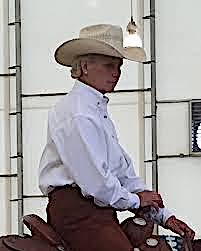
In 1978, a local girl was hired to take on the 2-year-olds. Her name was Josette Conti. “I would break the horses, then those guys would come and pick the Futurity horses they wanted,” Conti explained. “The ones that were left behind, we would keep riding and then sell them. Things were pretty slow when I first got there, then in 1985, they hired Dick Pieper has a resident trainer. I think he put everybody in the saddle. We had 60 horses in training when he came, so it really got going again after he got there.”
Conti liked the way the colt starting program was organized at the Farm. She said, “We’d bring them in in groups, you know. Dick Herr was good about knowing when they were born so the ones that were born earliest, were the first ones started. They would go into stalls, and we would start handling them, and then I would start to break them. Then, when those were done, they would bring in another group. It was like an assembly line, but it was so exciting. Every year, we were so excited to get the babies.”
Conti was employed by Willow Brook Farms a total of 22 years, adding to the pattern of long tenures employees of Willow Brook enjoyed, but what was it that kept them there for so long?
“Mr. Fuller was an absolutely wonderful person,” Conti gushed. “And Willow Brook, back in its day, was absolutely magnificent. It was polished. The place was just rolling hills and grass and pasture, and it was just absolutely, positively beyond gorgeous. It was so well-kept and so pristine.
“The way that Mr. Fuller built everything: he didn’t want one building on top of the other, so when you were breaking horses, it was a little inconvenient because you had a bit of a walk from one building to another, but when it came to the aesthetics of the place, he did such a good job because the layout is just gorgeous. He had conveyor belts in the stalls, so when you were cleaning the stalls, you would just put the manure on there, and it went around through a hole in the back wall where a wagon was waiting. Everything was just perfect. Now, there are a lot of gorgeous places, but back then, it was the elite place.”
The former breeding manager had a different perspective. Herr said, “One thing that I thought was interesting later, was that we all used to do the feeding, fence building, and the general stable work. Everyone that worked there, all the trainers and everybody, we would all chip in and we all had five or 10 stalls that we cleaned every day. You know, today they have people hired to do just that, but we all did it at Willow Brook. That was just part of the job. We all got along really well. It was kind of like one big family. Everybody had their job and knew what they were supposed to do.”
Brandner’s wife, Cindy, who grew up showing horses in 4-H with Holly remembered C.T.’s generosity most. She shared a story, “The Eastern Pennsylvania Reining Horse Association wanted to have a really big horse show, and we wanted to call it the Joe Cody Reining Classic, but the club didn’t have any money. Mr. Fuller backed the whole show. He paid for everything. That’s the kind of man he was. He was very generous. He wanted to promote reining horses as best as he could, and he had the finances to do it.”
Conti added, “I think we all had the same passion, and we were all absolute horsemen. You don’t walk away from a good deal like that.”
Perhaps it was Holly who said it best. She reminisced, “My dad had a vision. He made Willow Brook Farms a place that was a refuge for people and horses. When you came to Willow Brook, it was peaceful, and it was kind of healing for everybody. Everyone was a family, like, everyone who worked for Willow Brook, they were a part of something. There was no competitiveness. Everyone worked together. It was really a united effort to produce world champions, is what it was. A lot of people who were involved, came into their own after Willow Brook. They got their own places, and they continued the tradition of reining horses, quarter horses, and some cutting horses, and we are really proud of that. My dad created that. He created the atmosphere of a sanctuary.
“You couldn’t fail. It wasn’t about if you won or lost. It was about the comradery of working together and being a family. It was special. It really was, and it was absolutely, stunningly beautiful. There were old trees from my grandfather’s day, and every year, my dad would take my brother, my sister, and I, and we would plant a tree somewhere on the farm. It was named Willow Brook because there were so many willow trees my grandfather had planted. So, it is a tradition. There was a lot of tradition that continued at Willow Brook.”
After Dick Peiper left, Mario Boisjoli joined the Willow Brook team as head trainer. Like Pieper, he brought his own clientele with him. “They knew me as someone who came to their shows, and I had bought horses from them. I was living in the area when Dick left, and they were looking for a replacement. They called me and offered me the position, and it was a wonderful opportunity.”
The horse business was in full swing at Willow Brook when Boisjoli arrived, and like others, he was awed by the aesthetics of the farm. “It looked more like a resort than a horse farm. Mr. Fuller was an artist. He knew how to arrange things. A lot of people plant flowers in their gardens but he would plant trees. He also didn’t want the buildings too close together. We had several houses and barns, but everything was about as far apart as it could be. I was in the show barn, and it was about a half mile from the indoor arena, so we were all in good shape from walking up and down hills from one barn to the other and to the arena, because in the wintertime, it was slippery, so we had to lead them. But it was beautiful, more like a park or a botanical garden.”
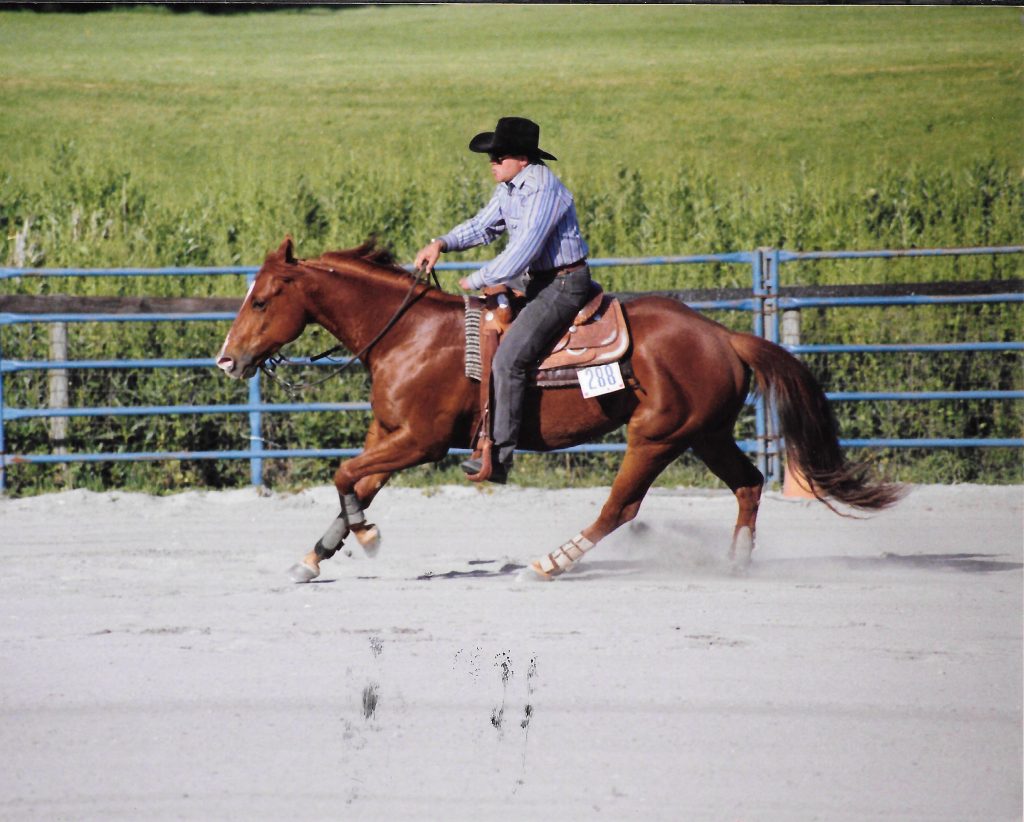
Boisjoli remembered fondly, “Mr. Fuller bought the back cover of the AQHA Journal for over 20 years beginning in 1964, and he liked to do the ads himself, so he took lots of pictures. When we saw him heading down to the barn with a camera, we would all try to hide because we knew someone was going to be busy all day helping him with pictures. It was a gorgeous place, though. We had a lot of beautiful ads. There were lots of willow trees and there was a stream running through the middle. That is the other part of where the name came from: Willow Brook.”
Boisjoli also remembered how the hillside next to the outdoor arena created an almost natural amphitheater for people to sit in the grass and watch the shows. There was also a cemetery where the better-known horses found their final resting place, that was also overlooking the arena which, interestingly, had no lights. “Mr. Fuller liked for things to look nice, so he didn’t want lights on the arena because he didn’t want those big poles ruining the scenery. When we had a show going, we always had to be done by dark, but you know, if you start a class, you have to finish it. Josette was in there showing one evening in the dark near the end of her class. I think the judges must have been scoring her by sound,” he said with a chuckle.
Another unique thing that Boisjoli noticed about the culture of the Willow Brook “family” was that everyone had a sense of pride in riding for the brand. “Everybody was proud in the fact that this was a Willow Brook bred horse or a Willow Brook trained horse. It wasn’t about winning more, it was the quality of the care that you knew went into the horses, and the care that went into how they were trained.”
Things were winding down for reining at Willow Brook Farms when Boisjoli left. As he was aging, Mr. Fuller’s son, Peter, was taking more and more responsibility for running the farm, but his passion was for roping horses, not reiners. “They were winding down the horse breeding. I left on good terms and all, but I could see that things were changing. I noticed that every time someone resigned or something, they didn’t replace them. I could see the writing on the wall, and I had an opportunity to move to Oklahoma. I thought it was good timing.”
Although Boisjoli was only employed at Willow Brook for five years, C.T. Fuller made a big impression on him. “He was, I think, the nicest gentleman I’ve ever met in my life. He was polite and courteous. Just a great example of good manners and thoughtfulness. When I left Willow Brook, I made a very special point of going down to Mr. Fuller’s office and personally thanking him. It was just an honor and a privilege to work there, and you know, I just appreciated him so much, I didn’t want him to hear it from somebody else.”
When Holly was asked about the values that she was raised with, it all came full circle. She explained, “First and foremost, a good work ethic. You know, with horses and ranching, it’s a quality of life. It’s not about the money. It’s not about winning, necessarily. If you do the right thing, and you work hard, and you study it, and you put the time in to become a teammate with your horse, you’re going to win. You just are.
“And then, my parents, I never heard my parents say a bad word about anyone else. They never gossiped. They were never mean-spirited in any way. I’ll never forget when I turned 18; my father brought me into his office with his financial advisor, and they gave me a lecture. I was about to inherit a lump sum of money – and it wasn’t a lot, but at the time it was a lot to me. They told me that along with this gift, comes responsibility. They said, ‘You have a responsibility to do good with this money, and not waste it, and not fritter it away for your own self-interests. You are expected to make a difference in this world.’ At the time, I was scared. I didn’t think I wanted all that responsibility, but you know, it made a difference for me. That really is the secret to being happy. If you can help someone else, it does fill your heart.”
After Holly moved to Colorado, she realized that the Aspen Camp School for the Deaf was just down the road from her and began to make a difference in those lives. She started a program where they took fifteen children from that school in three courses per day once per week and taught them to ride. “They just had to learn safety, to walk, turn and stop,” Holly said. “It filled my heart to do that. It was just wonderful.”
Generous giving was a tradition that the Fuller children learned early on in their lives. Holly explained, “At Thanksgiving, we would take a basket of food and a turkey that we had raised and deliver it to the older people at our church who didn’t have families in our community. My mom made my brother and I walk up to the doors with her, and knock. We had to be there to present those gifts to people who were in need. It was mortifying to my brother and I, but we never forgot. We always gave back because of our parents.”
Holly Fuller McLain currently lives at and operates Rumble Ridge Ranch in Carbondale, Colo. There, she caters to amateur riders with lessons, guided trail rides, equine rehabilitation, and sales.
Josette Conti Kain opened her own training facility in Kutztown, Pa., where she trains reiners and coaches riders of all ages and levels. She is a well-respected trainer. She was named NRHA Horsewoman of the Year in 2019 and has coached non pros to multiple Top Ten and World Titles. She gives credit for her career to her rides on Joe Cody’s son, High Proof, after his retirement from the show pen saying, “Once I rode him, I was addicted. There was no turning back after that.”
Dick Pieper rode 23 NRHA Futurity finalists and remained on the list of top 20 money earners for years to come. In 1985, he set a record for money earned in one year, which held until he broke it himself in 1994. He served a term as NRHA President, and held judging cards for the NRHA, NCHA, NRCHA, and AQHA. He was inducted into the NRHA Hall of Fame in 1993. He passed away during the writing of this story in 2022.
After leaving Willow Brook Farms in 1993, Dick Herr was hired to manage a ranch in Gainesville, Texas where he carried on his habit of performing “menial” chores on the ranch until he started to catch too much flack about it. He is now retired in the same city.
Bob Anthony went on to win six NRHA Open World Championships and trained many horses to stardom while mentoring numerous young trainers and non pros to the winner’s circle. He was inducted into the NRHA Hall of Fame alongside Jim Willoughby, Bob Loomis, and Bill Horn in 1992. He passed away in Tallahassee, Fla. on June 29, 2014.
Mario Boisjoli enjoyed a long, successful career as a trainer claiming his final NRHA check in 2007 as injuries accumulated over the years of his tenure began to catch up to him. It was then that he decided to seek a gentler living. He got his card and switched primarily to judging, but that kept him flying from one horse show to another for about 30 weeks a year. Finally, after 42 years of judging NRHA shows, he was ready to spend more time at home, so he became a certified health coach. This new tenure allows him to work from home with time for his new hobby: backpacking in some of the most remote and scenic locations in the country. He maintains contact with many members of the Willow Brook family. “I still talk to Dick Herr on the phone once in a while. We’re still friends,” he said. “Josette Conti, who worked with me, we’re still friends. The horseshoer there, Gene Brandner, called me to wish me happy birthday recently, so we are all still in touch.”
Gene and Cindy Brandner currently live in DeLeon Springs, Florida. At 78 years old, Gene still works as a farrier, and Cindy works as a substitute teacher in a high school. Cindy occasionally shows a former reining horse that can be traced back to Joe Cody in Ranch Horse competitions, and Gene ropes when he can.
Joe Cody lived at Willow Brook Farms until he passed in 1989 at 37 years old during the Joe Cody Reining Classic named in his honor. He lived out his last years in his own pasture with his own small barn accompanied by Holly’s old palomino mare, Woffards Sable, and then after her passing, he was given a Shetland pony for company. His bloodline continues to inspire greatness in the performance horse industry. His most notable grandson, Topsail Whiz, was the All Time Leading Reining Sire from 2010 until Gunner took his place in 2021. Joe Cody was attended at his death by Boisjoli who buried him above the famous outdoor arena next to his daughters Sapho and Easter. Fuller had a granite stone engraved with his many accomplishments to commemorate the place.
The patriarch of it all, C.T. Fuller lived out his days on Willow Brook Farms until he passed from this earth at 92 years old on September 5, 2011. His wife, Alexandra, followed eight years after in 2019. During his lifetime, he was not only the owner of the first reining-specific breeding farm east of the Mississippi but was also a notable photographer who won many Kodak awards, and even tried his hand as a film maker in the 1970s as he went all over the country in conjunction with AQHA to make “The Horse America Made” production. He also bought half interest in the little-known thoroughbred race stallion, What Luck by Bold Ruler. What Luck turned out to be the leading Thoroughbred sire for sprint racehorses. Fuller was inducted into both the NRHA and the AQHA Halls of Fame. He was a businessman, a gentleman, and a lover of nature. Many knew him simply as a friend. More than 100 people attended his memorial service.
Peter Fuller was always loyal to his father and Willow Brook Farms. He married Joan Benner and had three children: Nicole, Zach, and Jeremiah. Peter was fascinated with natural horsemanship methods, roping, and reined cow horse events. He hosted many clinics at Willow Brook Farms before a terrible car accident on October 10, 2011, changed his life and the course of Willow Brook Farms forever. Joan was killed in the accident and Peter was left with a traumatic brain injury putting into effect a situation in which the Fuller siblings: Holly, Peter, and Vicki, have minority voting rights concerning the Farm. Sadly, Willow Brook Farms is currently being parceled out for development, but so far, the main barns are still being used for equine activities, boarding and training purposes.
Reining legend and NRHA Hall of Fame inductee Tim McQuay shared the following sentiments: “Willow Brook Farms was very essential to the reining horse industry. Without C.T. Fuller behind it, the reining horse association might have never happened.
“As far as his breeding program, it was the beginning of breeding reining horses. Bob Loomis was probably first, but Fuller was right there with him. Bob went there and bought babies. Topsail Cody, himself, came from there.
“I didn’t go to a horseshow there until the mid-eighties. I lived in Minnesota at the time, and we went there to show in the reining. They were some of the biggest, weekend horse shows in the East. He made great ground, and it was great in the rain or anything. It was just a very good place.”
